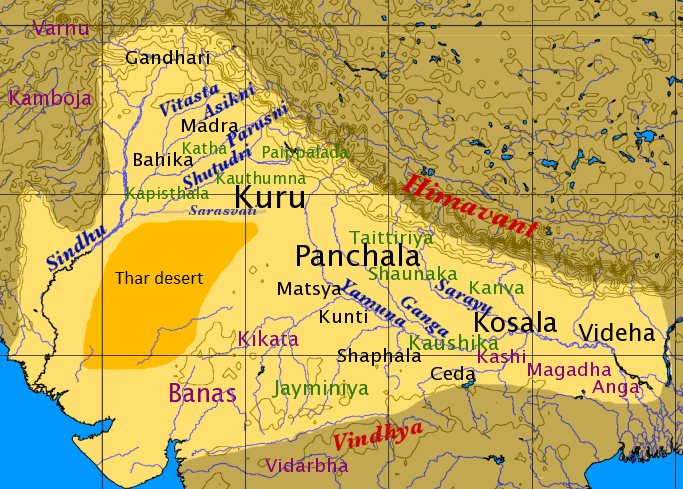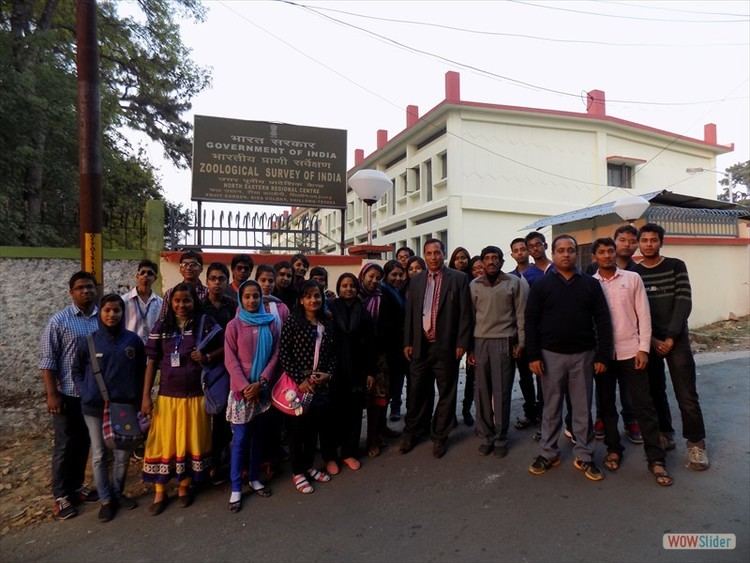Area 1,327 km2 District Hailakandi | Language spoken Bangla State | |
 | ||
University Srikishan Sarda College | ||
Map of Hailakandi
Hailakandi (pron:ˈhaɪləˌkʌndi) is a town and the district headquarters of Hailakandi district in the Indian state of Assam. The Hailakandi district is one of the three districts of Southern Assam i.e. Barak Valley.
Contents
- Map of Hailakandi
- Hailakandi assam india
- Hailakandi women collage kiss 3gp
- Geography
- History
- Demographics
- Constituencies
- References

Hailakandi assam india
Hailakandi women collage kiss 3gp
Geography

Hailakandi is located at 24.68°N 92.57°E / 24.68; 92.57. The area of Hailakandi town is 4.55 km2 according to the 2001 census. It has an average elevation of 21 metres (68 feet). It has an area of 1326.10 square kilometres. Out of this, more than 50% (i.e. 783.15 km2) is forested area. The forest comprises 781.45 km2 of reserve forest and 1.70 km2 of proposed reserved forest. The district has an inter-state border with Mizoram on its south having a length of 76 km, and an inter-district border on the other sides with Karimganj and Cachar districts.
According to the 2011 census, the population of the district was 659,296 while the population growth rate was 21.45%.
The prime geographical character that forms the topographical features of Hailakandi is the river Barak and its tributaries. These rivers spread rich alluvial plains across the length and breadth of three southernmost districts of Assam. There are two major rivers flowing through the district, Katakhal and Dhaleswari. There are also two small rivers named Pola and Jita. These four rivers are fed by seven tributaries that flow through the district.
There are two reserved forests in Hailakandi District, the inner line reserved forest and the Katakhal reserved forest. These were once rich in wildlife but this is now vanishing due to human onslaught. Rare species have been recorded, including the hoolock gibbon, Phayre's leaf monkey, pig-tailed macaque, white-winged wood duck, and purple wood pigeon. The southern part was also recommended as 'Dhaleswari' wildlife sanctuary.
Hailakandi comprises three notified towns, Hailakandi (district headquarters), Lala and Algapur, and one industrial township, Panchgram. A municipal board governs Hailakandi town and a town committee governs Lala. It has five development blocks: Algapur, Hailakandi, Lala, Katlicherra and South Hailakandi. Hailakandi Zilla Parishad covers these five development blocks. There are total of 62 Gaon Panchayats under these five blocks. There are 331 revenue villages, one municipality board and two town committees. There is also a small township at the Hindustan Paper Mill area at Panchgram in the Algapur block area. The connectivity of the district consists of the roads NH-53 and NH-154 and a railway (broad gauge work was in progress as of Jan 2016). Only 22% of the PWD roads are surfaced, having 78% of un-surfaced roads in the district, which indicate that access and availability of good road connectivity in the district is very low. The nearest airport is Kumbhigram airport which is located 83 km from the district headquarters.
History
It was constituted as a civil subdivision on 1 June 1869. It was upgraded to a district in 1989.
The later history of Hailakandi is intricately linked to Abdul Matlib Mazumdar (1890–1980), the late Nagendranath Choudhury, the late (Capt.) Manmatha Choudhury, the late (Capt.) Subodh Kumar Dutta and the late Sunil Chakravorty who led the freedom movement in the erstwhile sub-division. The late Nagendranath Choudhury was a prominent Congress-leader; Pandit Jawaharlal Nehru called on him in his house during his visit to Hailakandi in 1939. His brother Late Manmatha Choudhury was a captain in the Azad Hind Fouz formed by Netaji. Abdul Matlib Mazumdar became an MLA in 1946 and was also Cabinet Minister of Assam. He was one of the prominent Muslim leaders of eastern India to support Hindu-Muslim unity, opposing the partition of India on communal lines. Mazumdar along with Fakhruddin Ali Ahmed (who later became the 5th president of India) became the most prominent Muslim opponents of the demand for a separate Muslim state of Pakistan, especially in the eastern part of the country. Mazumdar took a Master of Arts degree in English literature from Dhaka University in 1921 and B.L. from Calcutta in 1924. He started legal practice at Hailakandi Bar in 1925. He rose to prominence as a lawyer serving the people of Hailakandi. The government then offered him the post of a magistrate, which he refused. He joined the Indian National Congress in 1925. He founded the Hailakandi Congress Committee in 1937 and became its first president. Netaji Subhash Chandra Bose and Pandit Jawaharlal Nehru visited Hailakandi in 1939 and 1945 respectively at the invitation of Mazumdar to strengthen the freedom movement as well as the Congress party in southern Assam. It was Netaji who initiated establishment of contact between Moulana Abul Kalam Azad and Matlib Mazumdar for gearing up nationalist Muslims against a growing Muslim League in the region. Mazumdar became the first Chairman of Hailakandi township in 1939 and in 1945 he became the first Indian Chairman of the Hailakandi Local Board, a post always held by the European tea planters.
Assam's Surma Valley (now partly in Bangladesh) had a majority Muslim population. On the eve of partition, hectic activities intensified by the Muslim League as well as Congress, with the former having an edge. A referendum had been proposed for Sylhet District (now in Bangladesh). Mazumdar along with Basanta Kumar Das (then Home Minister of Assam) travelled throughout the valley organising the Congress and addressing meetings educating the masses about the outcome of partition on the basis of religion. On 20 February 1947, Moulvi Mazumdar inaugurated the Assam Nationalist Muslim's Convention at Silchar. Another big meeting was held at Silchar on 8 June 1947. Both meetings, which were attended by a large number of Muslims, paid dividends. He was also among the few who were instrumental in retaining the Barak Valley region of Assam with India. Mazumdar was the leader of the delegation that pleaded before the Radcliffe Commission that ensured that a part of Sylhet (now in Bangladesh) remained with India despite being Muslim-majority (present Karimganj district).
Moulvi Mazumdar joined as a cabinet minister of Assam in 1946 with the portfolios of Local Self-Government, Agriculture and Veterinary. In 1947, India became free from British rule, when Mazumdar again took charge of the same departments in Gopinath Bordoloi's cabinet as the only Muslim minister (Moulana Tayyebulla was inducted in 1948) and also the lone member from the entire Barak valley region. The entire eastern India was swept by violence just after India's partition and independence on 15 August 1947, scores of Hindus fled the newly created East Pakistan (now Bangladesh) for India, and Muslims fled Assam for East Pakistan. A large number of people lost their lives owing to violence, which resurfaced with more ferocity in 1950. Mazumdar, the only Muslim in the cabinet, along with his cabinet and party colleagues, took up responsibility for the safety of both Hindus and Muslims in Hailakandi, touring affected areas and arranging camps and rehabilitation for the refugees, organizing supplies and security.
He continued as a cabinet minister in Bishnuram Medhi's cabinet until 1957. His last election was in 1967 when at the age of 77, Mazumdar reached Assam Assembly victorious. He then became the Minister for Law, Social Welfare and Political Sufferers in Bimala Prasad Chaliha’s cabinet. As a law minister, he initiated the separation of executive and judiciary at the district level. During the Bangladesh’s war of liberation in 1970-71, he was in charge of relief-and-rehabilitation of the thousands of refugees who fled the then East Pakistan. He resigned from active politics in 1971. Other posts held during his long career were Chairman of the Assam Madrassa Board, Chairman of the State Haj Committee, and the Pro Tem Speaker of the Assam Legislative Assembly (in 1967). He was instrumental in setting up the Haji Musafir Khana at Guwahati. As Chairman of the Madrassah Board, he initiated modernization of these theological schools and is also credited for the introduction of English and science in the curriculum of madrassas of Assam. The actual establishment of this district was done on 1 October 1989 by the late Shri Sahidul Alam Choudhury, who was the then reigning MLA of Algapur, and the P.H.E. and Municipality Minister of Assam during AGP rule. Under his leadership, the district was created and he was the architect behind the Hailakandi town planning. He was the key person to set up centres of higher education at Hailakandi.
Demographics
As of the 2001 India census, Hailakandi town had a population of 29,634 and the district had a total population of 5,47,003. Males constituted 51% of the district's population and females 49%. Hailakandi had an average literacy rate of 78.5%, higher than the national average of 59.5%: male literacy was 82%, and female literacy was 75%. 11% of the population was under 6 years of age.
Constituencies
Hailakandi is part of Karimganj (Lok Sabha constituency). Hailakandi has three state assembly constituencies - Hailakandi, Algapur and Katlichera.
